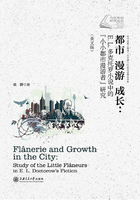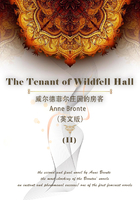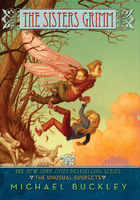US AND THEM AFTER 9/11
On September 12, 2001, Mamdouh went to the headquarters of Local 100 of the Hotel Employees and Restaurant Employees at 10 a.m. for an emergency meeting attended by more than 200 people. Family members held photos of their loved ones. The morning before, Windows catering employees had prepared and served breakfast for the Risk Management Company in the banquet space on the 106th floor. Seventy-three of them were lost in the end, a number that would forever stick in Mamdouh's head. The “falling man,” reportedly seen jumping from the top floors of the North Tower, was thought to have been from Windows.
The union was in a state of pandemonium, needing three full-time secretaries for a solid week just to handle the phones. Mamdouh spent that first week searching for his co-workers. He felt all their losses keenly. He felt particularly terrible about Telmo, the very young Mexican busser who had made a tight and optimistic unit with his even younger wife and tiny baby. Mamdouh's days were dotted with funerals.
The union negotiated with the Red Cross to set up a separate office to process union members and families that would supplement the official support center at Pier 94 at West 54th Street. HERE and two other unions established the Immigrant Workers Assistance Alliance (IWAA) to create a system for helping immigrants navigate the process and asked Mamdouh and three Windows co-workers to help staff it. Immigrants and family members poured into the office, usually seeking cash benefits for rent, clothing, and groceries.
Mamdouh took the Red Cross training for caseworkers and was officially certified. He translated for the French-speaking immigrants, most of them Africans, and guided many from the IWAA offices to Pier 94. Mamdouh found the family assistance center intimidating, with National Guardsmen surrounding the area. People were pushed into take-a-number-style lines with vague boundaries that snaked around the perimeter and could easily require two hours of waiting. There was an entire wall with hundreds of pictures of missing people put up by their desperate relatives. The Red Cross set up separate sections for those who had lost family members and those who were simply financially broken, creating one of the many distinctions among September 11 victims. It was nearly impossible to find a coordinator among the thousands of people.
Being there made Mamdouh worry about his race and religion. One day as he accompanied a worker, an encounter justified his anxiety. As his companion stood in line, Mamdouh sat down on a chair at the edge of the tents. Before long, four white police officers approached him, along with an older white woman.
The cops asked him why he had a Red Cross ID. “We need to know how you got this, sir.”
“What do you mean, how I get it?” Mamdouh replied. “I'm a case manager.”
“Would you come with us, please,” the cop said, before taking him inside to the Red Cross office.
For an hour, Mamdouh explained his association with the Red Cross and the union and how he came to have the Red Cross ID. The woman who had reported him left for a time and then came back. He thought to himself, “She's so proud—she thinks she's found a terrorist.”
He explained to the police, then to the site manager, who then phoned the Red Cross office in Brooklyn, giving Mamdouh's name and ID number over the phone. After that call, the manager told Mamdouh he had been cleared. Once he knew he could go, Mamdouh's anger rose. Unable to let go of the opportunity to say something, he told the volunteer that she had been completely out of line. She said she was sorry, but he rejected the apology.
“Your ‘sorry’ doesn't mean anything to me.”
“I'm just doing this to help, I don't need any problems,” she said, walking away.
Sacralization and 9/11
Collective traumas always take place within a larger context, and that context influences the collective response. Optimists expect survivors to band together, to help each other, and to unearth the event's larger lesson for humanity. Survivors do indeed band together, but the nature of their bonding is heavily influenced by the political and social context.
In times of globalization, when the reassuring anchors of national identity lose their grip, the dominant response to group trauma is to create a sacred memory of the event in ways that seem to restore that identity. Philosophers call this “sacralizing” a memory. The formation of a community of survivors— which can take place on scales both large and small—often constitutes a closing of ranks, building a wall around those who experienced the trauma.
The sacralization process relies on storytelling. The tale is told often enough to be frozen into the status of the sacred, unassailable by contradictory, or even just more complex, accounts of or reactions to the original event. The group forms around the act of remembering as much as it does around the memory itself, and one's relationship to the trauma becomes core to one's identity. Joining the group means passing a series of litmus tests, usually defined by recalling the event in a particular way.
Cultural critic Barbara Misztal says that this reaction tends to require obedience to the interpretation from other people: “This type of memory . . . is characterized by the sacred and fixed vision of the past and demands loyalty and regulates obligation. . . .”[1] When a group formed through this process attempts political action it often focuses narrowly on its own self-interest, isolating itself from others or even demanding that others subordinate themselves to the group's interests.
Inevitably, there are people who are left out of this sacralized narrative, or worse, unfairly vilified by it. These people might form a counter-memory, interpreting the event through a different story that extends rather than withholds the sympathy of survivors toward others: “In contrast to [the] uncompromising position of the first type of memory, the second type of memory does not impose such exclusive practices and assists people to articulate wider meaning and to cultivate links with a larger community,” writes Misztal.[2] The counter-memory group will keep some elements of the dominant narrative—grieving for the dead and maintaining the innocence of individual victims, for example. But other elements get a new treatment, as the countermemory group fights for an interpretation that allows more people into the community.
For forty years before 9/11, American identity had been increasingly challenged by global trends. Economic globalization had made many people less financially secure, while migration trends have changed the country's demographics. Policies that freed corporations to move around the world in search of the largest profit margin, along with advances in technology, had transformed our industrial economy into one focused on its information and service sectors. After our immigration laws removed national preferences for Europeans in 1965, immigrants of color began to arrive and settle in large numbers, not just in big cities, but also in rural and suburban areas. While we can see a less racist immigration policy as a more positive development than economic globalization, these things together nevertheless had a profoundly destabilizing effect on American communities.
September 11 is now the collective trauma of record for the United States. The attack itself was brutal enough to break thousands of families and destroy one of the most prominent elements of New York's cityscape. Manhattan took on the character of a disaster site, with toxic dust flying across rivers and into neighborhoods. New Yorkers, disturbed by the sight of the hole in the ground where the World Trade Center had stood, struggled to return to their customary collective self-confidence. The event also had an enormous economic impact that stretched from New York City throughout the nation.[3] The mainstream national response sacralized the day, relying on trusty, racialized archetypes of Americans as white and native-born, and foreigners as a dangerous, dark threat. The sacralization process, complete with racist stereotypes, merged with the immigration debate, pitting Americans and foreigners against each other and bolstering the idea that the United States should limit the entry of other people.
These archetypes, so prominent in the post–September 11 political discourse, had a narrowing effect on the subsequent immigration debate.
The ubiquitous narrative of that day is one of outsiders wanting to destroy all that generations of innocent Americans had built. “They hate us because of our freedoms” became an accepted mantra. The nation fixated on defining these outsiders, and on seeking out those who resembled them inside our borders. The characteristics of the insider group became more clearly defined. For one thing, insiders did not question the notion of U.S. innocence and suffering in this story, and they assumed that all Americans were affected by and reacted to September 11 in the same way. This story shaped both government and private action, and both sectors justified their actions in terms of nationalism. President Bush vowed to hunt down those responsible, driving the country to war in Afghanistan in less than six weeks. Congress passed the U.S.A. Patriot Act, expanding the government's power to suspend civil liberties in terrorism investigations.
Despite President Bush's proclamation that Americans should not blame all Muslims for the attacks, the line between insider Americans and outsiders became bolder, defined by the Patriot Act, hate crimes, and talk of ragheads on the Internet. A vigilante group called the Minutemen posse'd up to patrol the Mexican border. Conservative commentators like Ann Coulter associated Muslims with extremism. Coulter famously defended racial profiling when she wrote, “It is preposterous to assume every passenger is a potential crazed homicidal maniac. We know who the homicidal maniacs are. They are the ones cheering and dancing right now. We should invade their countries, kill their leaders and convert them to Christianity.”[4] Sales of American flags grew exponentially; in immigrant communities, their presence reflected a mixture of patriotism and desire to deflect violence.
Even the most compassionate responses to the crisis reinforced economic and racial hierarchies. The intention to discriminate isn't necessary—the pull of the dominant story, and the existing context, will create the effect. A good example was the September 11 Victims Compensation Fund, which Congress established to support the families of those who had died. Their motivation was financial rather than political: Congress would pay for suffering and lost income to save the airlines from thousands of bankruptcy-inducing lawsuits. The fund's sacralizing effect was due to its huge scale and its unprecedented nature, distributing $7 billion to 5,000 families in grants ranging from $350,000 to nearly $4 million. No such fund was created after the 1995 Oklahoma City bombing that killed 168 people and was masterminded by two white men. By putting a price on the lives taken on September 11 but not on those killed in Oklahoma City, Congress unwittingly gave the impression that it was worse to have been killed by a foreign Muslim terrorist than by a white American one. The distribution of money raised questions of hierarchy among victims. Should the children of firefighters get less or more than those of stockholders? What about those of the dishwashers, janitors, and delivery drivers? Should the children of undocumented immigrants get anything at all?
Mamdouh began his work helping immigrants navigate the relief system as the country sacralized, and racialized, the memory of September 11. Experiencing the effects of that sacralization on himself and others, he began to develop a counter-memory. The fact that he, like many of his immigrant co-workers, had known the traumatic effects of poverty and political repression long before 9/11 gave him a broader perspective on the event's meaning. The fact that he was an immigrant, accustomed to having his national identity shaken up, gave him the capacity to embrace a diverse community.
Being Undocumented After September 11
The relief process highlighted the marginal position of undocumented immigrants. An estimated 250 died on September 11. Countless others were injured or lost their jobs. Few such immigrants or their families applied for services. Some feared deportation, but others didn't want to appear unable to support themselves in the U.S., ruining their chances of obtaining green cards in the future. Still others couldn't figure out how to get around the circumstances of undocumented life—not having the apartment lease in one's name or having worked for cash and so having no pay stubs to prove employment. Mamdouh figured that 20 percent of his co-workers were undocumented. He extrapolated this from the figures of the dead: 16 of 73 is 22 percent.
Other organizations, like the Red Cross, just didn't prepare for undocumented victims. Red Cross volunteers tend to be overwhelmingly white, and most who served during September 11 were not from New York. It took Mamdouh's co-worker Mario Pe?a, an undocumented barback from Ecuador, two tries before he could trust that he would get help. The first time Pe?a went to Pier 94, he overheard volunteers asking for documents, including immigration papers. Scared, he slipped out of the line he had waited in for two hours. He went back days later after another friend told him that the larger agencies had agreed not to check for immigration status.
“Where are you from? Do you have your green card?” he was asked by a Red Cross volunteer who wore a pin indicating that she was from Nebraska.
“I think you are not supposed to ask me that,” he replied.
“You're right,” the lady said. “I just wanted to know anyway.”
From the Red Cross, Pe?a got $300 a week for four weeks to help pay his rent. Beyond that, he had nothing to fall back on.
The idea that undocumented immigrants use up public benefits without paying taxes is widely accepted, but in truth the overwhelming majority, a good 75 percent, actually work on the books like Pe?a did.[5] Using fake Social Security cards, they pay the same payroll taxes as anyone else, including Medicaid and Social Security. Their taxes support Social Security for the elderly and disabled and go into the unemployment fund, as well as funding the military, schools, and other public services. But undocumented people themselves can't use most of these benefits because to do so means risking discovery. Pe?a never filed tax returns, although he surely would have received refunds, and he couldn't apply for unemployment. When he gets old or if he becomes disabled, he certainly won't be able to get retirement or disability benefits. Through this mechanism of taxation without return, undocumented immigrants and their employers are thought to contribute some $7 billion to the Social Security system that they never use; all immigrants together bring the figure to $500 billion.[6] Pe?a didn't bother applying for any form of public income support such as public health insurance or food stamps. The Welfare Reform Act of 1996 cut off even legal immigrants from welfare, food stamps, and Medicaid, with exceptions for immigrant elderly and disabled people. The federal State Child Health Insurance Program, for example, is totally closed to undocumented children, and closed to legal resident children until they've been in the country for five years.
Other advocates reported similar experiences of scrutiny among their undocumented members. A union staffer went to the Red Cross with a twenty-two-year-old Mexican woman and her three-year-old daughter. Their volunteer grilled the woman about how she had entered the U.S. and where her papers were, all for the purpose of giving her a $50 grocery certificate. An Indian immigrant who had worked off the books at a café in WTC Building Two lost consciousness while escaping, only to wake up and find that possibly hundreds of people had trampled his left arm into uselessness. This man had no Social Security card, no pay stubs or W-2s, no green card, no letters from employers (who would be afraid of sanctions for hiring undocumented workers), no access to unemployment insurance or Social Security disability benefits. Dozens more examples like these were reported in Chinatown, which also had a large undocumented population and was hit hard by the aftermath of September 11. Many Chinese families ended up paying two rents for a time, keeping their New York housing while sending one member out of state on the cheap Chinatown bus every week to earn a living.[7]
The fund ultimately distributed money using a complicated formula that reinforced existing social hierarchies, which the press called “an aristocracy of grief.”[8] In return, the recipients signed waivers promising not to sue the government or the airlines. Everyone received the same amount for pain and suffering, but the economic relief packages were based on the income of the person who had died.
On the high end, the financial services company Cantor Fitzgerald protested when the fund published projections assuming that no one made more than $231,000, since many of its employees earned far more.[9] The initial formula also estimated women's wages at lower rates than men's, applying outdated data reflecting work time lost to child-rearing and assigning no value to domestic work at all. Others complained that the formula assumed that what people earned when they died was what they would have always earned. “Every human life is precious,” Frank Keating wrote in a Washington Post editorial, “and taxpayer dollars should not distinguish between those with and those without. The government authors official inequity when it compensates a dishwasher at the World Trade Center differently from the way it compensates the person whose dishes were washed.”[10] The awards ranged from $300,000 to $3.9 million. Tensions grew when the fund announced that it would reduce awards for those who had insurance, but not for those who received private donations.
The impression that some people deserve more than others was reinforced by the private sector; charities collected $676 million overall—the most collected for addressing any single tragedy in the United States.[11] Private charities set their own guidelines, implicitly valuing certain kinds of victims over others. For example, the National Association of Realtors, which gave $8.3 million to more than 1,000 families for rent and mortgage payments, decided explicitly to check immigration status. “We wanted to support the families of people who were here legally,” spokesman Steve Cook told the New York Times.[12]
For the undocumented family members of Windows workers, immigration status was the most pressing issue. Because the federal Victims Compensation Fund included them, undocumented families were in the ironic position of being eligible for hundreds of thousands, even millions, of dollars, but did not have enough ID to open a bank account. Mamdouh's former co-worker Sekou Siby, the multilingual teacher from the Ivory Coast, brought one such woman into the union within a few days of the attacks. Siby had realized that Hadidjatou Traore, whose Ivoirian husband Abdoul had helped Siby get his job at Windows, needed more than friends could provide. Mamdouh had known Abdoul as a solid member of the union's contract committee. They had sometimes prayed together in the stairwell or sat together for an occasional meal.
Hadidjatou was a small, neat woman who spoke very little English and seemed quite shy. She gave away little of her panic and grief, except that her leg shook throughout the group meetings at the union hall. When Mamdouh translated for her, he often had to ask his questions twice. Abdoul and Hadidjatou had married in Abidjan, where she had been a nurse's aide and he had owned a grain-and-beans stall in a large open-air market. When the shop started to decline in the early 1990s, Abdoul had convinced Hadidjatou that they should leave the country. He'd tried for visas to France and the U.S., hoping to be able to legalize his status once there. The U.S. visa came through first, and Abdoul left a pregnant Hadidjatou in Abidjan. She followed him without the child in 1997 on a three-month tourist visa; she would never have gotten one for both herself and her daughter.
By then, Abdoul had started to hope for a new legalization law and he convinced his wife to stay, thinking they would soon be able to bring the little girl to the U.S. Over the years, they had two more children in New York. They celebrated the younger one's first birthday on September 10, in a Bronx townhouse that they had just bought. At 4 a.m. on September 11, Abdoul had left for his second job delivering USA Today, which he did every morning before going to work at Windows. No one had heard from him since.
While Siby searched for Abdoul in the hospitals, Hadidjatou sat with Abdoul's cousin, whom she thought of as her brother-in-law, at the Red Cross offices where families waited for news. Mayor Giuliani was there, hugging people and sitting with the families. Several times each hour, someone called out and spelled the name of a survivor who had been found, and a cheer went up from some part of the floor. When she had heard more than fifteen names called and watched her brother-in-law weeping, Hadidjatou decided she would never go back to that place. She was sick over the thought that her daughter would never meet her father. When Hadidjatou called Abidjan that weekend, her daughter cried and cried for her parents.
Hadidjatou's inability to confirm Abdoul's death made it hard to concentrate. She was sick with diarrhea and her heart seemed to shake the entire first week. Both kids had fevers, and the whole family cried constantly. With each rare survivor story, she thought Abdoul's prospects worsened. She worried about waiting too long to conduct the customary death rituals. Normally, one started praying on the first day. And she knew that she had broken Muslim tradition by emerging from her home so soon after being widowed. She would say to the family's menfolk, “He was on the 106th floor. The airplane crashed into the top floor, how can he survive, even if he jumped? My husband is not there.” But it took three weeks for her to convince them that they should begin mourning rituals of prayer and fasting.
Hadidjatou and the union then started the long process of bringing her daughter to the U.S. First they tried to get the State Department to issue the girl a visa. They got Senator Chuck Schumer involved, but found that the State Department was adhering strictly to its rule of not issuing visas to people, even children, who had no legal sponsor and who were likely to stay. Given the circumstances, Schumer wrote letters imploring the State Department to show more flexibility. “There ought to be some way that in very rare and unique cases an exception can be made,'” he told the New York Times. “It's unfortunate that they could not find one here.”[13]
The union had helped another family through diplomacy, having persuaded the U.S. embassy in Ecuador to grant a temporary visa to the wife and three children of an undocumented Windows worker. The State Department declared that Hadidjatou's only hope was to get the Immigration and Naturalization Service to provide a humanitarian exception to the visa rules that would allow the girl to join her mother. Soon after that the union lawyer who had been helping Hadidjatou called to say that the girl should present herself at the U.S. embassy in Abidjan. The visa was granted the next day, and in January, Abdoul's cousin flew to the Ivory Coast to bring the eight-year-old back with him. Hadidjatou bought a doll and took a small procession of people to greet her daughter at John F. Kennedy Airport. Getting this visa, however, was only the first step. Later, Hadidjatou would get a reprieve in the form of “deferred” status. Deferred status doesn't give someone a green card—it indicates that the authorities know that you are in the country, but would not pursue deportation. It essentially gives someone the chance to find a way to legalize their status, including waiting for a new law that would set the parameters for such applications.
Immigrants Create Counter-Memories
September 11 highlighted the aspects of immigrants' lives that already placed them at the bottom of New York's cultural and economic hierarchy, which they had been able to bypass momentarily while working at Windows. Their poverty, their vulnerability to violence, their problems with immigration status all played a role in how they ultimately interpreted the event.
As the IWAA reached the date of its planned obsolescence, it was obvious that Windows workers, their families, their friends, and their peers in the restaurant industry still needed help. The government treated the situation as a temporary emergency, but what Windows workers really needed was a political shift; the occasional job training or cash assistance would make no long-term difference in their unstable lives. While many Windows survivors accepted medical treatment for depression and anxiety following the attacks, they also needed jobs, housing, health care, and legalization—these were needs that therapy and pills couldn't meet.
For the immigrants in Mamdouh's community, their ongoing experience of hardship in turn helped them see the systemic nature of their problems, which would ultimately help them create a counter-memory. For example, Windows banquet server Ataur Rahman, who was forty-three on September 11, identified three major traumatic incidents in his life. After a bloody civil war that established Bangladesh's independence from Pakistan, he joined a movement to push for a secular, democratic state. His party held power for a time, but was overthrown in 1975 in a military coup. Although Rahman had already lost many friends and relatives to war and persecution, he felt the sharpest blow when the movement's leader was deposed and killed. “I was afraid that if I lived there, I would maybe not have any future,” he said.
In 1979 Rahman came to New York and eventually found work at Windows. He was nowhere near the building in 1993, when Ramzi Yousef bombed the World Trade Center, killing six people and shutting down Windows for the next three years. Nevertheless, the bombing affected Rahman profoundly. He did not work for a year, believing that the restaurant would reopen quickly. He refused to let his wife work and incurred a large credit card debt. He didn't apply for unemployment or welfare benefits, and the government offered no compensation. Windows reopened after three years, but there was a protracted fight to get all former workers hired back.
When a relative called Rahman in 2001 to say that a plane had hit the towers, he felt as though fundamentalists were following him. “I left my country because of that,” Rahman thought, “and now I'm seeing this thing.”
This time, he reacted intensely. He lost his will to work and felt constant anxiety. He went on antidepressants, frequently switching prescriptions because of the side effects. He slept too much or not at all. He had nightmares. He couldn't concentrate. He felt unable to plan or even take basic next steps toward recovering his livelihood. Surrounded by therapeutic options, Rahman used some of the counseling offered to victims of September 11, feeling better for only a couple of hours after each session.
Other workers affected by September 11 had lived through poverty and the dangers of crossing the border illegally. While increasing the number of Border Patrol officers had no effect on the numbers of people crossing every year (that number remained steady), deaths at the border nearly doubled after 1995 as migrants took increasingly long and dangerous routes to the United States.
Manuel Guttierez,[14] who worked at Ranch One near the World Trade Center, grew up in Nezhaqualcoyotl, Mexico, in a two-room house that his construction worker father had built. All his siblings worked starting as teenagers and gave about half their earnings to their parents. In 1998, he decided to go to the United States, persuaded by his cousins who had already made the trip and had connections with a coyote who would charge only $1200. Guttierez had heard stories about people who died trying to swim across river channels or crossing the desert, and others who died because they were shot by border police, but he made himself think positively. Guttierez, whose stocky build belied his talent as a jewelry designer, traveled with a friend and a cousin; the three had vowed to stick together. They flew from their little town to a bigger city, then took a taxi to Naco, at the border, where they met sixty other migrants and an assistant coyote who guided them across the desert. Guttierez carried a gallon of water, tortas—Mexican sandwiches that his mother had made for him—and some fruit. There was a tense moment at the beginning when one man tried to bargain for a lower rate.
The group left at 8 a.m. to walk in a long single-file line across the desert to Arizona. The coyote told them not to talk, just to follow. Guttierez and his companions started at the middle but dropped to the back because his portly cousin was slow and tired quickly. They had to go through seven barbed wire fences (put up by farmers and the Border Patrol). Each time they had to help his cousin pull the barbed wire wide enough for him to squeeze through. At 10 p.m., they were the last of the group to run across the highway to the waiting point where vans would take them to a hotel.
Until then, things had been fairly smooth. But the van Guttierez was in—the last of three—broke down after only a few minutes. The driver used his cell phone and a four-door car arrived to take them to the hotel. Fifteen people crammed into that car, lying on top of each other. Guttierez lay across two men in the back. The driver got a call saying that the police were following them, so he sped up, erratically swerving all over the road. At one point, Guttierez looked up to see a big truck coming right at them. He had heard stories of people crashing and prepared himself to die at that moment. The driver lost control of the car, which almost flipped over, but Guttierez was lucky. He hadn't paid much for the trip, in money or in safety. The minimum price charged by coyotes is $1,000 and the maximum is $4,000. He'd heard of Ecuadorans and Chinese paying up to $10,000 to cross the border. He met one Ecuadoran woman who went back every three years, paying $10,000 each time. In a situation like that, he thought, you can't save any money. Once he was living in New York City, Guttierez himself never went back to Mexico because he couldn't take the risk of being caught. He'd intended to stay in the U.S. for two years and then return to rebuild his business, but by 2001 he was already a year past that deadline.
Windows barback Mario Pe?a, who had made a similar journey from Ecuador to Mexico and then to Arizona, found that being undocumented itself produced a constant state of anxiety. Pe?a had grown up in a family of ten children in Cunca, Ecuador. He started working at sixteen making door and window hinges in a factory. At eighteen, he went to work in a grocery and entered college. He gave up school to keep the job, saving every bonus check until he had the $3,000 he needed to follow his brother to New York in 1987.
Before Windows, Pe?a worked the jobs available to undocumented men: delivering groceries or working as a landscaper, a busboy, and a construction helper. Each time he stood on a street corner waiting for a contractor to choose him for a day's labor, or applied for a job for which he had to provide papers, he felt that he wore his lack of status like a badge. Being a barback at Windows, where Pe?a earned $7.50 an hour, gave him a reprieve from the dangerous process of making money to feed and shelter himself. The minute he got his Windows ID card he told himself, “OK, now I am safe.”
None of these people could find steady work immediately after September 11, and none were able to do what they had trained or hoped to do. Sekou Siby, who had brought Hadidjatou Traore to the union, was a thirty-nine-year-old line cook at Windows on September 11. Born in Abidjan, Ivory Coast, Siby also came to the U.S. in 1996, leaving his entire family of fourteen siblings to escape political persecution as a student organizer. Siby was on unemployment for eight months after 9/11, then entered numerous training programs for jobs that either didn't exist or paid too little. He learned the computer program QuickBooks and was certified as a security guard with fire safety qualifications and CPR. He couldn't live on the $8 per hour salary of a nonunionized security guard, though. His training supervisors told him they knew he was overqualified and offered him work as a program supervisor at $10 per hour. Siby, who stands 6 feet 4, decided to drive a cab instead.
After his private September 11 benefits ran out, Guttierez went to work at a Chinese restaurant earning $50 per day as night porter for ten to eleven hours of work. He then became a food preparer at the same salary. He also took many classes, including a GED prep course and computer training. Pe?a worked part-time at the Russian Tea Room for seven months, only to be laid off with a weekend's notice and no severance. He applied for more jobs, but by then everyone wanted papers. By 2003, his only jobs came from the catering manager at a sushi restaurant, for whom he would work a party on a moment's notice, earning little more than the minimum wage.
When memory is sacralized, the survivor's sense of belonging tends to shrink. Protecting oneself and one's memory from attack becomes the most important thing. Out of fear, survivors shut others out; only people who experienced the trauma in the same way are allowed into the community. Only by refusing to freeze such a memory, by seeing it not as a dramatic, unusual incident but rather as a part of the patterns of human society, can survivors expand their identities to allow empathy or build political solidarity.
In the United States, this urge to sacralize the memory of September 11 played out at both the micro and macro levels. At the micro level, benefits for September 11 survivors were strictly limited to those who had been in the World Trade Center on that day. These decisions were based on judgments about who was deserving and who was not. These judgments were apparent in the differing compensation settlements from the federal Victims Compensation Fund, out of which the children of stockbrokers got millions more than the children of janitors. Private charities operated along similar lines. So much money poured into the private September 11 Fund, for example, that administrators ran out of families directly affected by the attack, yet the fund's directors and donors never broadened its mandate to address the systemic problems that emerged—widespread health hazards, job loss, and the need for housing rehabilitation.
At the macro level, the political decisions of Congress and the president drew a line around America as victim, and that line was further used to marginalize Muslims, South Asians, and immigrants in general. Here too, key judgments were used to justify a new disregard for civil liberties. First, the word illegal increasingly came to represent human beings and families in the popular culture. Their “illegality” was then viscerally attached to terrorism, directing Americans' fear and scrutiny toward undocumented immigrants of a particular color rather than toward, say, U.S. foreign policy. These ideas would open the space for institutions and individuals to separate immigrants from Americans, in deed and in law.
Much has been made about how undocumented immigrants had broken American law and so shouldn't be rewarded as criminals. Mamdouh thought of this argument in light of his own experience. He felt that all the hand-wringing about “the law” was somewhat overwrought. Many people from poor countries simply can't get legal immigration, even if they are well-educated professionals. Such so-called law-breakers had worked for years at Windows, and been excellent employees and good people. He could imagine the conditions that had made otherwise honest people lie to ensure their own and their families' survival, having experienced some of those conditions directly. Mamdouh knew that but for a stroke of luck, any Windows worker could have died that day. If the planes had hit at 4 p.m., he too would have been dead. Others had come even closer. Two days before the attacks, Siby had given his morning shift to someone who had wanted to drop the Sunday shift because he played in a mariachi band on Saturday nights. Mario Pe?a had gone to work late so he could pay his bills. It was a matter of luck that all of them were still alive, and all felt that they somehow had to express gratitude for that good fortune.
Mamdouh knew that restaurant workers had had problems before that day, and that those problems would continue. What he didn't know, however, was that the most vilified of those workers, the undocumented, had had a decent chance at changing their status on September 10. That possibility had been swept away by the emerging September 11 narrative. He had little idea that this drama was taking place because it was happening far away, in Washington, D.C.
注释:
[1] Barbara Misztal, “The Sacralization of Memory,” European Journal of Social Theory 7, no. 1 (2004), pp. 67–84.
[2] “If we distinguish a continuum of the memory openness ranging from closed or frozen memories to open-ended and often shared across group lines memories, it can be said that the first type of memory can subordinate just treatment of individuals (members and nonmembers) to the identity and interest of the group . . . (Misztal, “Sacralization,” p. 78).
[3] The Fiscal Policy Institute estimated that the 9/11 attacks cost New York City 105,000 jobs and $9.3 billion in lost wages, largely in Lower Manhattan, from businesses dying or relocating outside the city. The job loss was concentrated in low-wage industries. The restaurant industry lost some 13,000 jobs, and some 60 percent of all the jobs lost were among workers who earned less than $11 an hour. People who didn't lose their jobs found themselves with sharply reduced hours and wages. Over half the layoffs were concentrated in five typically low-wage industries: restaurants, retail, air travel, hotels, and building services. By the end of 2001, the travel industry nationwide had lost 237,000 jobs (David Dyssegaard Kallick, Matthew Mitchell, and James Parrott, “Revitalize New York by Putting People to Work,” Labor Community Advocacy Network and the Fiscal Policy Institute, March 13, 2003. Accessed at www.fiscalpolicy.org/research_NYC.html).
[4] Ann Coulter, “This Is War: We Should Invade Their Countries,” September 13, 2001. National Review Online. Accessed at www.nationalreview.com/coulter/coulter.shtml.
[5] Jennifer Van Hook, Frank D. Bean, and Jeffrey Passel. “Unauthorized Migrants Living in the United States: A Mid-Decade Portrait.” Migration Information Source (MIS), Migration Policy Institute (MPI). 1 September 2005. Available at www.migrationinformation.org/feature/print.cfm?ID=329.
[6] Francine J. Lipman, “Taxing Undocumented Immigrants: Separate, Unequal and Without Representation,” Tax Lawyer (Spring 2006). Available at SSRN:
[7] Saba Waheed, Wendy Bach, Laine Romero-Alston, Ray Brescia, and Andrew Kashyap, “Ripple Effect: The Crisis in NYC's Low-Income Communities after September 11th” (New York: Urban Justice Center, September 2002).
[8] David Barstow and Diana B. Henriques, “A Nation Challenged: The Families; Gifts to Rescuers Divide Survivors,” New York Times, December 2, 2001.
[9] Daniel Wise, “In 14 Test Cases, Sept. 11 Fund Master Gives ‘Fair Compensation’ to Families,” New York Times, October 1, 2002.
[10] Frank Keating, “Dishwasher or Stockbroker, a Life's a Life,” Washington Post, January 20, 2002, p. B7.
[11] Nicole Wallace, “Online Giving Soars as Donors Turn to the Internet Following Attacks.” Chronicle of Philanthropy, October 4, 2001. Available at www.philanthropy.com/free/articles/v13/i24/24002201.htm.
[12] Mireya Navarro, “For Illegal Workers' Kin, No Paper Trail and Less 9/11 Aid,” New York Times, May 6, 2002.
[13] Steven Greenhouse, “A Husband Lost, and a Daughter Out of Reach,” New York Times, December 2, 2001.
[14] This name and some others have been changed to protect confidentiality.















